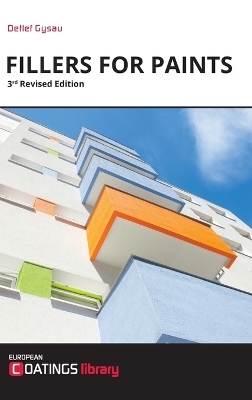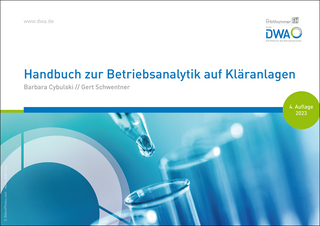
Fillers for Paints
Vincentz Network (Verlag)
978-3-86630-284-6 (ISBN)
Contents
1Introduction 13
1.1Historical overview 13
1.2 Filler market 15
1.3 Definition of fillers and pigments 16
1.4 Classification of fillers 17
1.5 References 18
2 Mineralogy 19
2.1 Carbonates 19
2.1.1 Calcium carbonate 20
2.1.2 Dolomite 25
2.2 Silicas 25
2.2.1 Quartz 26
2.2.2 Cristobalite 27
2.2.3 Kieselguhr 28
2.3 Silicates 29
2.3.1 Talcum 30
2.3.2 Kaolin 32
2.3.3 Mica 34
2.3.4 Feldspar 35
2.4 Barium sulphate 36
2.5 References 38
3 Production of fillers 41
3.1 Production of natural fillers 41
3.1.1 Prospecting 41
3.1.2 Mining 42
3.1.3 Processing 45
3.2 Synthetic fillers 51
3.2.1 Precipitated calcium carbonate 51
3.2.2 Precipitated barium sulphate 53
3.2.3 Modified calcium carbonate 55
3.2.4 Synthetic silicic acids 56
3.2.5 Precipitated aluminium silicate 59
3.3 Surface treatment of fillers 60
3.4 References 61
4 Characterisation of fillers 63
4.1 Filler testing 63
4.1.1 Optical properties 64
4.1.2 Morphology 68
4.1.3 Physical properties 74
4.1.4 Chemical properties 77
4.2 Filler analytics 79
4.2.1 Scanning electron microscopy 79
4.2.2 Spectroscopy 81
4.2.3 Chromatography 85
4.2.4 Further methods 87
4.3 References 89
5 Properties of fillers 91
5.1 Carbonates 91
5.1.1 Natural calcium carbonate 92
5.1.2 Precipitated calcium carbonate 98
5.1.3 Modified calcium carbonate 100
5.1.4 Dolomite 103
5.2 Silicates 106
5.2.1 Talcum 106
5.2.2 Kaolin 110
5.2.3 Mica 115
5.2.4 Feldspar 118
5.2.5 Precipitated aluminium silicate 120
5.3 Silicas 122
5.3.1 Quartz 122
5.3.2 Cristobalite 125
5.3.3 Diatomaceous earth 128
5.3.4 Pyrogenous silicic acid 129
5.3.5 Precipitated silicic acid 132
5.4 Barium sulphate 134
5.4.1 Natural barium sulphate 135
5.4.2 Precipitated barium sulphate 137
5.5 Aluminium hydroxide and other mineral fillers 139
5.6 Organic fillers 141
5.7 References 144
6 Applications of fillers 145
6.1 Importance of fillers in paints and coatings 145
6.2 Important formulation parameters 146
6.2.1 Non-volatile matter 146
6.2.2 Spreading rate 147
6.2.3 Pigment volume concentration 148
6.2.4 Critical pigment volume concentration 151
6.2.5 Pigment/filler loading 155
6.2.6 Packing density 156
6.3 Filler influences on coating materials 159
6.3.1 Dispersibility 159
6.3.2 Rheology 161
6.3.3 Wet hiding power 163
6.3.4 Storage stability 165
6.4 Filler influences on coatings 167
6.4.1 Hiding power 167
6.4.2 Colour properties 174
6.4.3 Reflectivity 176
6.4.4 Mechanical properties 179
6.4.5 Chemical resistance 181
6.4.6 Outdoor durability 183
6.5 References 186
7 Trends 187
7.1 Nanotechnology 188
7.2 Forms of delivery 190
7.3 Sustainability 190
7.4 Light weight fillers 192
7.5 References 193
Examples for guide formulations 194
List of filler examples 204
The topic of fillers for use in paints and varnishes is an old one, so one might ask why there has been no comprehensive book on the subject to date. Could it be something to do with the earlier prevailing perception of fillers as cheap materials for bulking up profits? Are fillers even worth writing about? Certainly! The sheer number of mineral end-products, the frequently underestimated effort that goes into their manufacture, the testing done to characterise their diverse properties, their wide-ranging applications – that is an awful lot of information to pack into a single work without diluting its focus. Simply to consider the spectrum of professions involved in producing and using fillers – geologists, mineralogists, mechanical engineers, machine operators, chemists, paint and varnish specialists – highlights the extent of hidden technical activity. Fillers are instrumental in many properties of coating materials and films: their rheology, content of volatile organic compounds, solids content, brightness, opacity, reflectivity, adhesion, anti-corrosion characteristics, mechanical and chemical resistance… the list goes on. The bottom line is, proper use of fillers calls for a great deal of knowledge. The present book sets out to convey that knowledge in a straightforward and understandable manner, without compromising scientific objectivity and rigour. Special attention has been given to clear topical division and structuring, to facilitate finding pertinent information, fast. That having been said, the gamut of available fillers is so vast that there would be insufficient space to cover all the materials out there, some of them quite exotic. Instead, this book concentrates on fillers in regular current use, with numerous figures and tables to illustrate their properties and applications. All the same, this book cannot claim to be exhaustive in scope. Readers wishing to obtain further information and details will be served by the extensive bibliographic references provided. This book is intended for anyone who is in any way professionally involved with fillers used in coating materials. Beginners and students will gain a comprehensive overview of the field, while experienced developers will find practical details of immediate relevance to solving their everyday problems. In 2016 I was notified that also the second edition of “Fillers for Paints” is going to be sold out soon as well. I am more than delighted to learn that also the second edition found so many new readers. The continued interest in my book is also judged by manifold feedbacks which I received since 2006. All of them expressed to me their thanks and congratulations by filling a knowledge gap in raw materials for paints. In particular, I appreciate that the book supports training for all different kind of groups, either in industry or science. The third edition allowed me to place small corrections, update market and filler data and add more sub chapters about new fillers and nevertheless an outlook about the future, for example sustainability and light weight fillers. Detlef Gysau Oftringen/Switzerland, January 2017
| Erscheinungsdatum | 04.05.2017 |
|---|---|
| Reihe/Serie | European Coatings |
| Zusatzinfo | zahlr. schw.-w. Abb., Graphiken, Tab. |
| Verlagsort | Hannover |
| Sprache | englisch |
| Maße | 155 x 225 mm |
| Gewicht | 548 g |
| Einbandart | gebunden |
| Themenwelt | Naturwissenschaften ► Chemie |
| Schlagworte | Applications of fillers • Barium sulphate • Carbonates • Characterisation of fillers • Mineralogy • silicas |
| ISBN-10 | 3-86630-284-3 / 3866302843 |
| ISBN-13 | 978-3-86630-284-6 / 9783866302846 |
| Zustand | Neuware |
| Haben Sie eine Frage zum Produkt? |
aus dem Bereich


